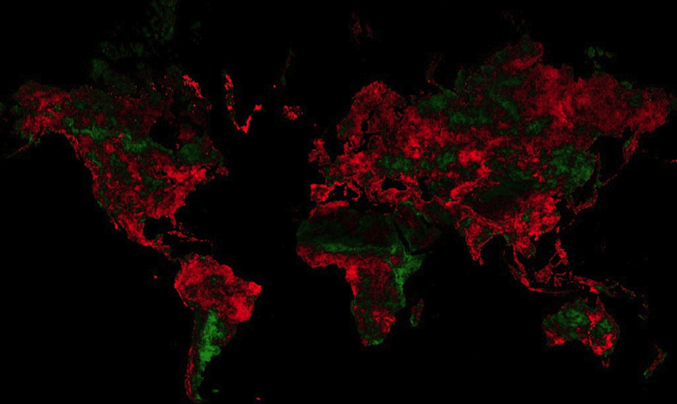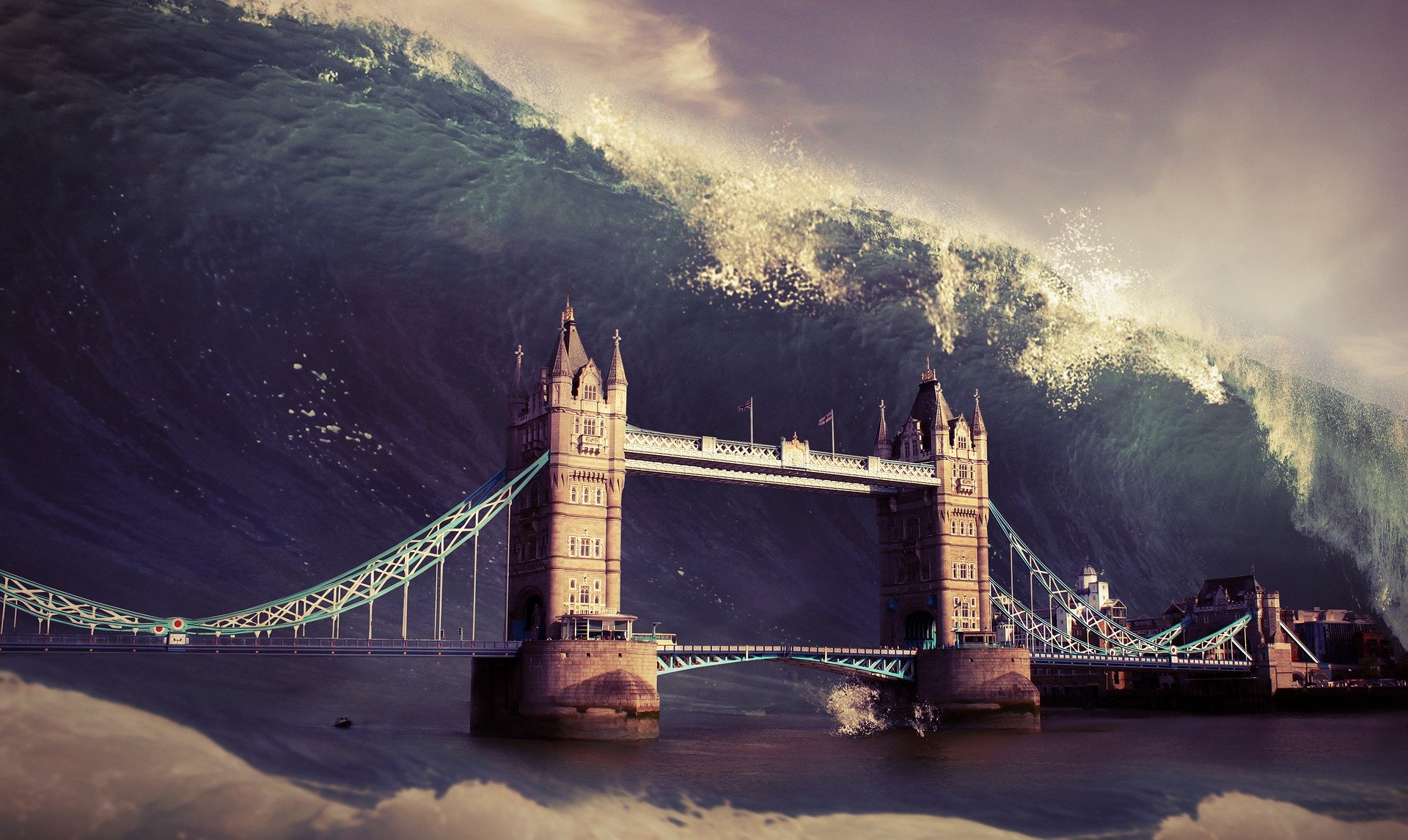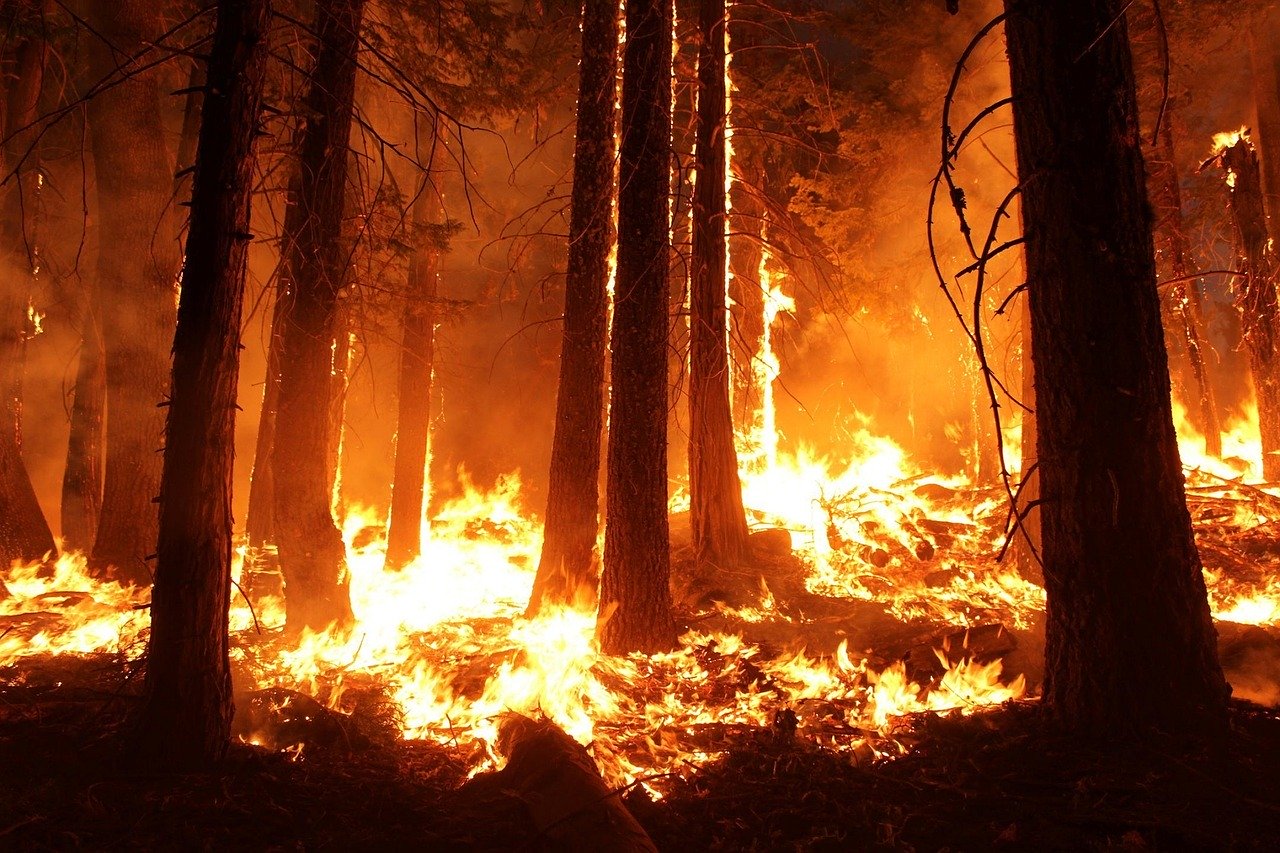So, hi there guys, this is Bryce and welcome to Eco Overload. This is my first real post so let me know your thoughts in the comments and without further ado let’s get into things!
Deforestation, The Bigger Picture
Deforestation. Its currently seen as a massive problem, with 30% of the earth’s landmass being covered in forests, and 18.7 million acres of forest being lost every year. As I’m sure you’ve heard before that’s 27 football fields every minute! This all equates to about 15% of global green house emissions (say the WWF).
For my first post though, I didn’t want to start setting a picture of complete doom and gloom. As in recent decades in some regions there has been an overall increase in forest cover, but how much of an effect is this having and what does this mean for the future?
Firstly though, within the bigger picture, you need to get an idea of the global distribution of forests, with the image below illustrating this, with white representing high levels of vegetation and black indicating low levels. This image has been created through using the normalised difference vegetation index (or NDVI for short) which compares ratios of different wavelengths of light, which are absorbed by plants, to decide how much vegetation there is and even how healthy it is. The map does elegantly show the vegetation distribution, with the highest values being attributed to the tropical rainforests such as the Amazon and around the Congo in Africa. The deserts across the planet also show as void of veg, as the Sahara, Mojave, and Gobi deserts all show up dark across the world.

Global Deforestation
Here’s the problem, now that we know where areas of forest and vegetation are distributed, we can look at how much forest we are losing and where. That’s where the next image comes in. It shows the changes in vegetation between 1982 and 1990, to illustrate just how much vegetation has been lost over the 8-year period and where. The shear extent of the forest loss is clear with major losses across the tropics as well as the general trend worldwide being overwhelmingly negative from Europe and Asia to both the Americas, with the loss of over 15.5 million hectares (between 1980 and 1990). Tropical rainforest has also been lost around the Congo, although much of Eastern Africa and the Sahel has seen slight greening. This is probably being down to anomalous rainfall linked to monsoons.

Now this data is getting old now, but unfortunately the patterns seen have mainly continued through to today, with the situation becoming worse in key tropical regions, such as the Amazon, central Africa and Asia. So, the overall picture does look bleak. Europe on the other hand is really bucking the trend.
Greening Of Europe
The greening of Europe has been relatively well documented over the past couple of decades with widespread gains in forests (with an addition 12,074,000 hectares between 1990 and 2005). Just how widespread this is can be seen below and the effects continue today. The question then turns to how and why has this happened.

The European Union has started leading the way for reforestation and environmental thinking. This change in behaviour is largely down to the EU financially supporting farmers with payments for crop diversification, maintaining permanent grassland and using plots of arable land to try to increase biodiversity, by introducing trees and hedges for example.
This is part of a massive push for a greener more sustainable future by fighting against climate change and adapting industry and the economy to minimise the environmental impact. This push for a more environmentally friendly Europe has been driven by the EU and has resulted in it having the most extensive environmental regulations across the world. The proof is also there, that these regulations are helping to reforest Europe as shown above, with the EU now being greener than at any point in the last 100 years.
The Rest Of The World
Why then, is the rest of the world continuing to deforest at an alarming rate, while Europe has proven that trends can be reversed? Essentially because of development. The clearing of forest allows for the further development of agriculture, logging and commonly mining. This is certainly the case in Brazil, whose government announced earlier this year that environmental legislation would be relaxed to allow further deforestation and expansion of various industries.
The issue is if deforestation continues at current rates, the CO2 emission will have catastrophic effects let alone the environmental and unforeseen impacts that would occur. The positive direction shown by Europe simply isn’t a big enough difference to even dent the rate of deforestation but shows it can be done. So ultimately the UN or the EU needs to offer support and assistance to countries posing the largest risks to the world’s forests, and this needs to be done before the effects are detrimental to the planet.
Thanks for reading.
-Bryce




